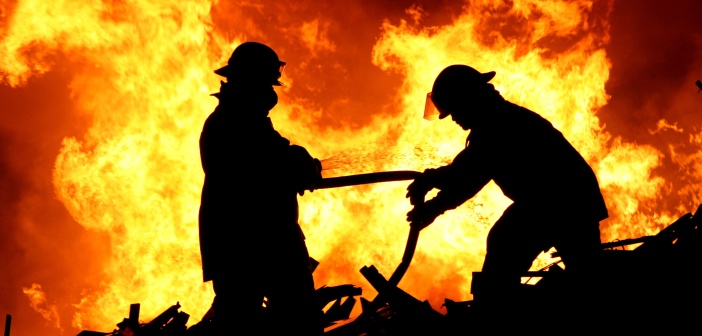Cleaning up after a fire is often a laborious process. There are so many ways materials and surfaces in the home can be affected, and each has to be approached differently. The damage can seep into any surface or crevice, so each type of issue must be handled meticulously.
Smoke Odors
One of the biggest problems that exists after a fire is getting rid of the odor it leaves. It also happens to be one of the most difficult tasks as smoke smells after intense fires can last even as long as 100 years on some items. These odors can vary depending on the types of materials that were burned. Plastics and synthetic textiles create a strong odor and typically leave behind black smudgy residue. Organic materials such as wood, paper and cotton produce more tolerable odors with powdery residue.
Ridding a building of smoke smells can be done by residents, but it may be best to leave it to professionals as many methods require exposure to hazardous materials or techniques. Trisodium phosphate, or TSP, is a product that can be purchased at many hardware stores to clean up walls and structural surfaces after fire damage. This helps eliminate the residue and improve the smoky smell that remains. A process called thermal deodorization uses high internal temperatures to break up the smell, and ozone treatments create large quantities of the substance to eliminate the odor.
One of the simplest ways to relieve the smell is by airing out the building or home. Opening windows and doors for extended periods allows fresh air to enter and drive out the smoky aromas. Natural deodorizers such as activated charcoal, baking soda and vinegar can help remove smells in smaller spaces.
Water Damage
The areas of the home most affected by the fire may be subject to water damage due to the efforts of those in the home attempting to extinguish it. The first step to treating water damage is to remove any remaining moisture through professional drying procedures. This will prevent color damage of fabrics and carpets in addition to minimizing buckling of wood or rusting of metals. After the walls and floors are dried, there may still be mold and mildew left to handle.
Mold and Mildew Development
We talked with Duraclean Specialists, Inc. who explained, “A result of stagnant water and moist walls and floors is the natural development of mold or mildew. Allowing these substances to grow in the home without proper treatment can lead to harmful effects on the respiratory system. Once the home is dry, the first way to tackle the mold is removing any items that were wet that are no longer needed. These may harbor unseen mold or mildew and should be discarded.” For items that cannot be moved, any visible mold should be treated before being removed by brushing, blasting or using a HEPA vacuum.
Soot and Ash
Soot is another form of smoke damage, and it can be complex to clean up. Soft surfaces such as textiles or drapery should not be cleaned by hand as this could smear the soot and cause further staining. Carpet can be cleaned professionally, and soot on hard surfaces can easily be wiped with sponges and cleaning detergents. For porous hard surfaces, a dry chemical sponge can be used to prevent permanent staining.
Many of the procedures taken to clean up fire damage may be handled under homeowner’s insurance. Some issues must be taken care of with expert help, such as air ducts. The easiest way to complete the task as a whole is to take each part of the damage one at a time while seeking help as needed.




